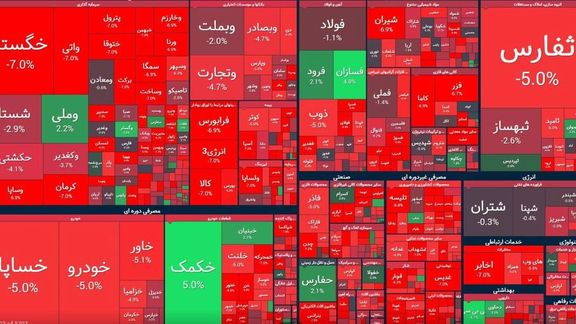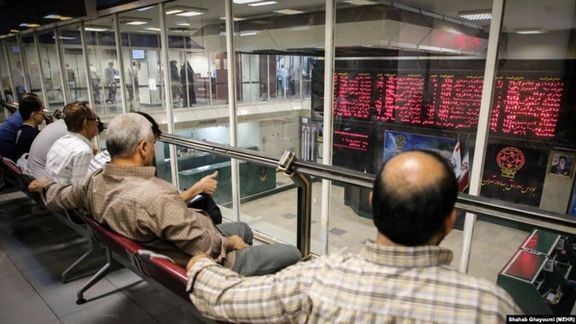Tehran's Stock Exchange Indices Fall For The Fifth Consecutive Day

Tehran's stock exchange indices fell for the fifth consecutive day on Saturday amid a five-year economic crisis, with 50-percent annual inflation and a battered currency.

Tehran's stock exchange indices fell for the fifth consecutive day on Saturday amid a five-year economic crisis, with 50-percent annual inflation and a battered currency.
The main index decreased nearly 2.8% and more than 80% of shares experienced a fall in price.
According to official Tehran stock exchange reports, in today's transactions, natural persons withdrew about 38,000 billion Rials (more than 73 million dollars) from Tehran stock market, so that the total withdrawal of money by natural persons in the past five days, reached approximately 168,000 billion rials (323 million dollars).
Considering the current exchange rate of the US dollar in Tehran’s open market, the stock Exchange has lost 27 billion dollars of its value during this declining period.
The fall represents a ten-percent decline in the official value of all shares in the market, but most companies are directly or indirectly owned by state entities, and it is hard to put a clear value on assets.

Although the fall is not dangerously high by international standards, Iran’s stock market is controlled by the government and investors fear possible machinations in inflating and deflating the market.
The stock market decline is the latest negative economic news for the government of President Ebrahim Raisi, who is widely criticized as inefficient and incapable to deal with multiple problems.
However, the main trigger for the overall economic crisis was the move by the United States to withdraw from the JCPOA nuclear accord in 2018 and impose crippling sanctions on Iran’s oil exports and international banking.
The government, which is highly dependent on oil revenues, now suffers from an acute shortage of foreign currencies needed for food and raw material imports. The national currency reserves estimated to have been around $150 billion were mostly spent since 2018. This has led to a 12-fold fall in the value of the rial, fueling more inflation.
Economists expect hyper-inflation in coming months as the country experiences serious political instability following months of anti-government protests.
In July 2020, Tehran’s stock market fell by more than 30 percent in about one week and some shares fell by as much as 50 percent, wiping out the savings of many small investors who had believed government promises of a safe stock market.
Some observers said at the time that government entities had inflated the stock market and ripped large profits before its sudden fall. The memory of the 2020 crisis has remained strong among investors who become jittery at any sudden downturn.
Many economic analysts believe that government manipulation also added to the crisis, which has led to negative fundamental analyses of market shares.
Fall in steel producers’ shares, as well as mining companies contributed most to the decline in the past five trading sessions.
The production of steel and petrochemicals, the main non-crude exports, have suffered declines in the past year due to a shortage of natural gas, a vital energy source for these industries. Although Iran has the second largest natural gas reserves in the world, its output is declining due to lack of investments and Western technology.